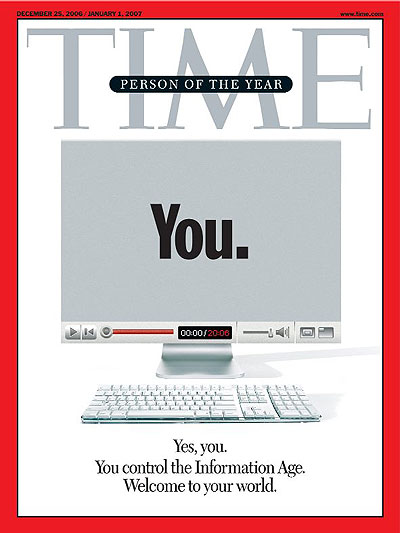In the years following World War II, a strange and exciting new technology emerged. Moving pictures … in your living room.
Showing eager audiences moving pictures was nothing new — people had been watching nickelodeons since the 1800s, and theatres were showing silent films and “talkies” well into the dawn of the 21st century. But, save for the wealthy owners of home theaters, one had to go out to experience these. Moving pictures were group activities, while sitting around the fire listening to the radio was the mainstay of the modern home.
Television changed that. Many wrote TV off as a fad, but soon, nearly every home in North America had a television: rabbit-ears pointed in all directions, picking up everything from news broadcasts to sporting events. By the 1950s, presidential addresses were delivered over television, and wide-eyed children watched incredible footage of the moon landing, beamed back from the furthest any human being had ever gone in our galactic front door. Moving pictures became personal.
Color TV was introduced in the 1960s, and as VHS tapes were born in the late 1970s, TV became an on-demand medium. No longer did you have to wait for your favorite show to come on, you could record it, and watch it later. No longer did you have to wait for a station to play your favorite movie, you could pick it up and watch it at your leisure, commercial-free. On-demand television was an exciting idea as early as the 1970s. And it’s no surprise that when the internet rolled around in about the same time frame, it would take less than 30 years for video to become one of the primary, and most exciting uses of this new communications network.
And that, is what we want to talk about today. We believe in the power of online video, but where did online video begin? What were some of the key milestones that got us to where we are now — a world where Facebook’s CEO believes video will be as big as mobile phones in how we communicate, and Cisco conservatively estimates that up to 80% of the internet’s traffic will be video by 2020. Funnily enough, it all began with a pot of coffee.
The Trojan Room: Laziness Breeds Innovation
While details are foggy on what the very first video was to be streamed over the internet, few people mince words over the first real “live” video stream. In 1991, in the old Computer Laboratory of the University of Cambridge in England sat a lonely coffee machine. Disappointed engineers from all over the building would traverse the hallowed halls to find the coffee pot empty, and would trudge back to their offices and labs empty handed. To help alleviate this great stress, a camera was set up across from the coffee pot, beaming its status to any computer in the building.

By 1993, web browsers had attained the ability to display images, and the camera was connected to the internet as an image that could be refreshed ‘live’ to make it easier to transmit its status. As the world wide web grew, so did the popularity of the webcam, with people checking in from all over the globe to see the status of Cambridge’s coffee pot. One could argue that in addition to being the first live video streamed daily on the internet, it was also the first viral video. The coffee pot pre-dates Google, so to find it, you had to either know where to look, or have someone tell you.
Broadcasting a coffee pot online to save engineers a walk down the hall may seem like a small feat, but this humble beginning is the first step towards the video-driven world we live in today. And as technology evolved, so did its capabilities. In 1993, a top-of-the-line modem would have transmitted and received data at 14.4k per second, which works out to downloading a 1mb image in 9 minutes and 42 seconds. Streaming a Netflix movie, at a whopping 1.5gb per film, would take 242 hours and 23 minutes, or just under 21 days. On-demand digital video wasn’t quite ready for prime-time yet, but the seeds were planted. All it needed was technology, and mainstream interest, to catch up.
Enter: Moore’s Law.
Moore’s Law and Online Video
Moore’s Law is the observation that, as technology advances, the number of transistors in a dense circuit doubles every two years. Sometimes this is the result of progress, sometimes Moore’s Law is seen as a target that must be reached so we reach it. A self-fulfilling prophecy, if you will.
While there’s no direct relation of Moore’s Law to internet speed, one could look at the rate at which we have increased our internet communications capacity in a similar light. Whether it’s advancement in technologies through natural experimentation, or simply the desire to meet the demand of ever-increasing complex online processes, our internet speed and bandwidth has continued to rise year-after-year, and with it, our ability to do amazing things online has risen too.
The late 1990s saw the rise of broadband internet, and the increasing complexity and creative possibility of internet browsers to display more exciting media. GIFs began to emerge as a popular moving image format, and some of the earliest viral ‘videos’ — adding audio to a page with moving gifs, and looping them at the same rate — began to emerge too. While not the proudest moment in internet history, few will struggle to remember the Hamster Dance, sent out via countless emails from well-meaning relatives, and spawning everything from techno remixes to awful day-time television dance parties. Like it or not, the Hamster Dance was one of the first viral videos. And a new technology emerged that would change everything once again.
The Short But Exciting Rise of Flash
Flash Video, Developed by Macromedia in the late 1990s, was officially added as part of Adobe’s Flash Player 6 in 2002, and ushered in a new wave of online video. In addition to allowing media companies to display short video online and in a format that was easy for browsers to display, Flash was also an easy platform to build animations, and would enable thousands of would-be cartoonists to bring their visions to life. Animations like the infamous Badgers video arrived in 2003, and were widely shared privately before Flash-focused websites like Newgrounds opened up to user-generated content. The now famous Numa Numa video, uploaded as a flash video, would attain an unheard of 2 million views in its first three months online.
In addition to battling for bandwidth space against Napster and a host of new file-sharing platforms, online video finally had the technology, and the required bandwidth to become a mainstream phenomenon. News networks used Flash to share their segments online, sports teams shared highlights on their websites, and humor sites like eBaum’s World and AlbinoBlackSheep became popular destinations to watch and create flash animations.
With so much video scattered across the web, watching the content was no longer an issue for those that could afford the internet connection required to enjoy it. But finding video content was still a challenge. Until Valentine’s Day, 2005.
Why You Were the Time Magazine Person of the Year in 2006
By 2005, nearly 30% of all households in the United States had “high speed” internet — using cable or DSL to access a much higher download and bandwidth rate than had been offered by telephone modems. This dramatic increase in available internet speed, coupled with digital cameras (and video cameras) becoming more commonplace, was creating an interesting intersection of opportunity.
There was a lot of video content floating around. And people had the technology to watch it at home, or at work. But where did you put it?
On February 14th, 2005, Chad Hurley, Steve Chen, and Jawed Karim, three alumni of PayPal, launched YouTube as a place for people to share their online videos, and search for other people’s videos. The first video uploaded to the site was commemorating Karim’s trip to the zoo.
Anyone could create an account, upload their content, and start building their “channel”. And people did. In less than a year, YouTube was serving 100 million videos online per day, and was accounting for 60% of all internet traffic.
Remember that intersection of opportunity I mentioned earlier? YouTube found it.
Much like television was made for people, but largely paid for by advertising, the internet was beginning to emerge as an ad-defined space as well. Banner ads and spam emails were nothing new in 2006, but truly innovative brands were looking for new ways to connect with users in a way that didn’t annoy them, but got them excited. A medium that was drawing people in every day to watch content was still an open playing field.
Nike saw an opportunity in 2005, and uploaded a three minute clip of soccer star Ronaldinho quietly trying on some new cleats, and showing off his incredible shooting accuracy (watch for it at 1:40!):
It’s grainy, shaky, and has no background music or other editing. But it was the first video to break 1 million views on YouTube the first time it was uploaded, and it ushered in the concept of viral videos on YouTube. Brands had taken notice of this new anything-goes online video platform, and Nike could proudly wave the flag that they had been the first to find real success with it. Connecting with users had gone from a television battleground to an online one.
In 2006, after breaking nearly every possible milestone in online video (and setting up a few new ones for others to break along the way) YouTube was acquired by Google for a whopping $1.65 billion. The partnership only fuelled YouTube’s growth, adding advertising features to generate revenue, and bringing so much attention to the platform that in 2008 some experts feared YouTube would collapse the entire internet infrastructure by simply being too big for it to handle.
By the end of 2006, YouTube was part of a larger collection of online applications that focused on user-generated content, and community building. MySpace, Wikipedia, YouTube, and a host of other collaborative sites led to Time Magazine publishing the controversial Person of the Year as simply “You”, representing the people who used these tools every day to redefine the web. YouTube’s role in this was center-stage, as the cover featured a monitor showing a mirror, with the conspicuous scrubber bar on the bottom of the popular online video platform:

2007 saw Facebook, at the time a powerfully emerging social network, begin to include video as an uploadable media typel to compete with YouTube. Few could predict how powerful Facebook would turn out to be, and how much this pivotal moment would affect its future success.
As with any medium, YouTube celebrities also began to emerge, with the popular Fred being the first channel to reach 1 million subscribers in 2009. For the sake of your eardrums, I will refrain from posting any of Fred’s clips as part of this article, but I will remind you that the internet is sometimes as inexplicable as it is incredible.
Streaming Video is the New Norm
While YouTube was busy collecting user generated content (and deleting slyly uploaded copyrighted material) another startup had been brewing since 1997, and would shake up online video just as much in a short time.
Started in 1997 as a way of renting DVDs by mail, Netflix launched its streaming media service in 2007, less than a year after YouTube was acquired by Google. While YouTube had worked with publishers to show some copyrighted material online through a pay-per-view model, Netflix built its model on offering big budget movies on-demand for a monthly fee. By 2013, less than 6 years later, Netflix would add television shows to its roster of streaming media, and would become the biggest source of downstream traffic on the internet, taking in a whopping 32.3%. With House of Cards debuting the same year, Netflix again broke records by launching its own high-budget programming to compete with the very network TV providers it had long used as its main source of content.
YouTube and Netflix showed the power of small companies to change the way we consume media, but big corporations weren’t entirely in the stone-age either. Hulu launched in 2007 as a television-focused competitor to Netflix’s streaming service, and led by a consortium of companies, including Disney, Fox, and Comcast. While it launched after Netflix, it remains a popular competitor to this day.
Much like Nike was the first company to truly take advantage of YouTube as a marketing channel, other large companies began to see the power of online video, and a new challenge to network television was emerging. Long thought of as the ‘holy grail’ of commercial marketing, the Super Bowl was taken by storm in 2011, as Volkswagen posted their now-famous “The Force” commercial to YouTube four days before the big game:
By Super Bowl Sunday, the ad had received over 8 million views, and would go on to become one of the most shared Super Bowl commercials of all time. While these online views can’t match the number of eyes on the ad during the Super Bowl broadcast, it showed brands that spending money creating ads for the Super Bowl could have the added bonus of making your company an internet superstar. Within a few years, nearly every brand was taking advantage of this, especially Budweiser.
The early 2010s would prove to be pivotal in the rise of streaming video, as bandwidth continued to improve, and live video became far more accessible. YouTube launched live streaming in 2011, and even the International Olympics Committee, an organization steeped in the revenue it receives selling broadcast rights to its events, chose to live stream portions of the Olympics from London in 2012. Brands like Apple and Salesforce began live streaming their event keynotes in 2013, opening up the door for countless online viewers to experience up-to-the-minute news from their favorite brands live, and share in the experience.
Live streaming, and streaming video was here to stay. So where do we go from here?
The Future Will Not Be Televised, But It Will Be Advertised
The rise in online video has been meteoric within the last decade, but few realize the costs of hosting and delivering all of this video. Consumer internet may be relatively inexpensive depending on where you live, but for brands hosting and serving millions of videos — like YouTube and Facebook — bandwidth costs are definitely a concern. Much like cable television was supported by commercials and sponsored broadcasts, online video has slowly become one of the most powerful, and lucrative advertising tools.
Facebook launched video ads in 2014, and America watched over 20 billion video ads in 2013 alone. Brands began to move commercial content from television to the web, and content like Dove’s Real Beauty Sketches and Geico’s Hump Day ads were viral sensations in the years they were published. Some brands have eschewed even creating their own content, looking to users for inspiration. GoPro’s video of a fireman saving a kitten has been viewed millions of times, and much like most of their YouTube content, was not originally produced by their team.
Even presidents began to take advantage of the popularity of online video, with Obama appearing on the popular Zach Galifianakis web series Between Two Ferns to promote Healthcare.gov. The site saw a huge increase in traffic as a result of his appearance, and was lauded as a successful way of communicating a controversial — but potentially life-saving — topic to a younger audience.
The early 2010s also saw the dawn of what many consider to be the real future of online video: mobile.
Vine, launched by Twitter in 2013, quickly became a widely popular video-only social network. Popular picture-only social network Instagram added video only a few months later. Brands immediately leapt on this opportunity to show short-form video content to their audiences, and even older brands like GE leapt on the trend, launching their Vine account a mere one day after the network was started.
By now, it had been less than a decade since Nike took home the trophy as the first video to reach a million views on YouTube and online video was no longer a fun niche market for brands big and small; it was a must-have.
The Sky is the Limit
So what is the future of online video? For one, it’s volume. Mark Zuckerberg, whose company, Facebook, went from being a small dorm-room project to the largest social network in history, predicts that video will look like as big of a shift in the way we communicate as mobile has been. And, as I mentioned earlier, Cisco is already predicting that by 2020, at least 80% of internet traffic will be video.
100 million hours of video are watched on Facebook every day. That’s 11,415 days of video content. So, if everyone is doing it, how do brands stand out?
First, brands are embracing new technologies as fast as engineers can create them. In 2015, YouTube launched 360 video, and Facebook followed suit. Brands as big as National Geographic, and as small as college football teams are using 360 video to give viewers an immersive experience with their content. Whether you’re helicoptering over a volcano, or running onto the field with Stanford at the Rose Bowl, the experience is unlike anything we’ve seen before in online video.
As people begin to expect video content from brands, innovative companies are also adding interactivity to their videos. Honda took a chance in promoting their Civic R with The Other Side, allowing viewers to flip back and forth between the family friendly version of their car, and the darker, more mysterious story that lurked beneath.
As video has matured as a marketing asset, many marketers are also looking to take video off YouTube and start seeing real results with it. Video platforms (like Vidyard – selfish plug) have emerged to help brands complement their YouTube strategy with more in-depth viewer analytics and lead generation elements. While there is always a place for branded content on YouTube, businesses that want more from their video – and to have more control over what plays before and after it – are increasingly moving content to their own websites, and keeping it there.
Personalization has also become the cornerstone of modern marketing, and brands are following suit with their video content. A recent personalized video campaign from Lenovo saw an almost 5x increase in clicks compared to their usual campaigns. And that was to a list of dead leads. If seeing their first and last name in a video is enough to drive prospects to click through and engage, I suspect we’ll see far more companies using this technology to stand out.
At the end of the day, online video is quickly replacing network television as one of the biggest sources of media attention. Streaming services like Netflix, user generated content sites like YouTube, and social networks like Facebook are making video accessible, searchable, and using complex algorithms to supply viewers with the exact content they know they will enjoy. Whether we spend the rest of our lives glued to a screen remains to be seen, but one thing is for certain: brands know how much time we spend watching content, and smart ones are taking advantage of online video as it grows.
Now, after all of this, I still don’t have a good way of knowing whether or not the coffee pot in our own kitchen is empty most of the time, but perhaps I can look at one of the latest innovations — inexpensive, video-enabled drones that I can control with my phone — to solve that.
After all, when it comes to online video, the sky truly is the limit.
The post A Shortish History of Online Video appeared first on Vidyard.
source
http://www.vidyard.com/blog/short-ish-history-online-video/




